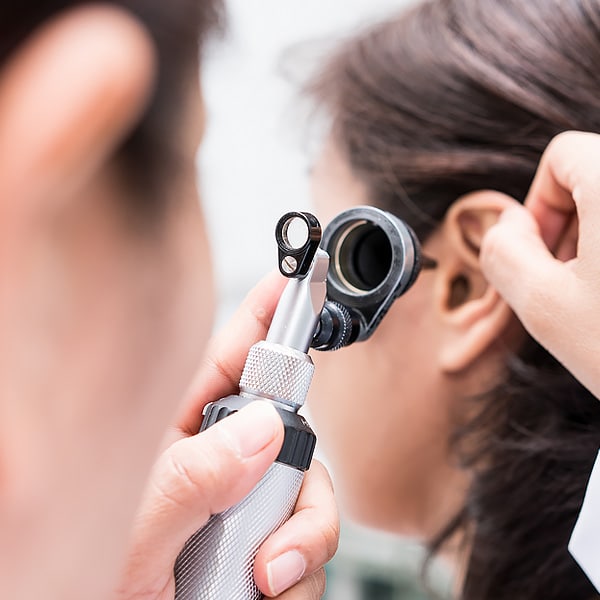When the thin little layer of tissue that divides the ear canal from the middle ear tears or is punctured, it is known as an eardrum perforation. Symptoms of a perforated eardrum can include very sudden and sharp ear pain, often associated with a middle ear infection. Typically, after several days of ear pain from the infection, a sharp brief pain is felt in the infected ear and the eardrum perforates. Often after the eardrum perforates, the ear pain gets much better because the pressure is released. Once the perforation occurs, clear, pus-colored, or even bloody fluid can drain from the middle ear. Buzzing or ringing sounds in the ear along with a decrease in hearing may also accompany the eardrum perforation.
What causes eardrum perforations? It is often due to a middle ear infection where mucus and fluid will build up behind the eardrum. The eardrum itself will get inflamed, swollen, and bulging; and if the pressure is great enough, it will rupture and fluid will drain from the middle ear. Extreme pressure changes like those that occur going scuba diving and moving up or down in the water too quickly can cause barotrauma and that can cause the eardrum to perforate. Also, direct trauma to the eardrum, for example using a cotton swab, bobby pin, or another object to clean your ear, can accidentally poke the eardrum and cause a perforation.
Although perforation of an eardrum sounds frightening, it is relatively common and frequently can heal itself within hours or a few days, usually before you can get in to see your doctor! Treatment for eardrum perforation depends on what caused it to begin with. If an infection is what caused the eardrum to rupture, antibiotics will be prescribed. Topical antibiotics in the form of medicated ear drops may also be prescribed to prevent further infection of the lining of the ear. If the ruptured eardrum was caused by an injury to the ear (for example, from a cotton swab), only antibiotic eardrops may be needed to help prevent infection from developing. Often a follow-up visit is required to ensure the eardrum has healed. If the eardrum hasn’t closed up, a visit to the ear, nose, and throat (ENT) specialist is usually required. Sometimes minor surgery is performed with a tiny paper patch on the eardrum to help seal up the hole. If the hole does not heal after a few months, larger surgeries can be done to help repair the ear drum.
